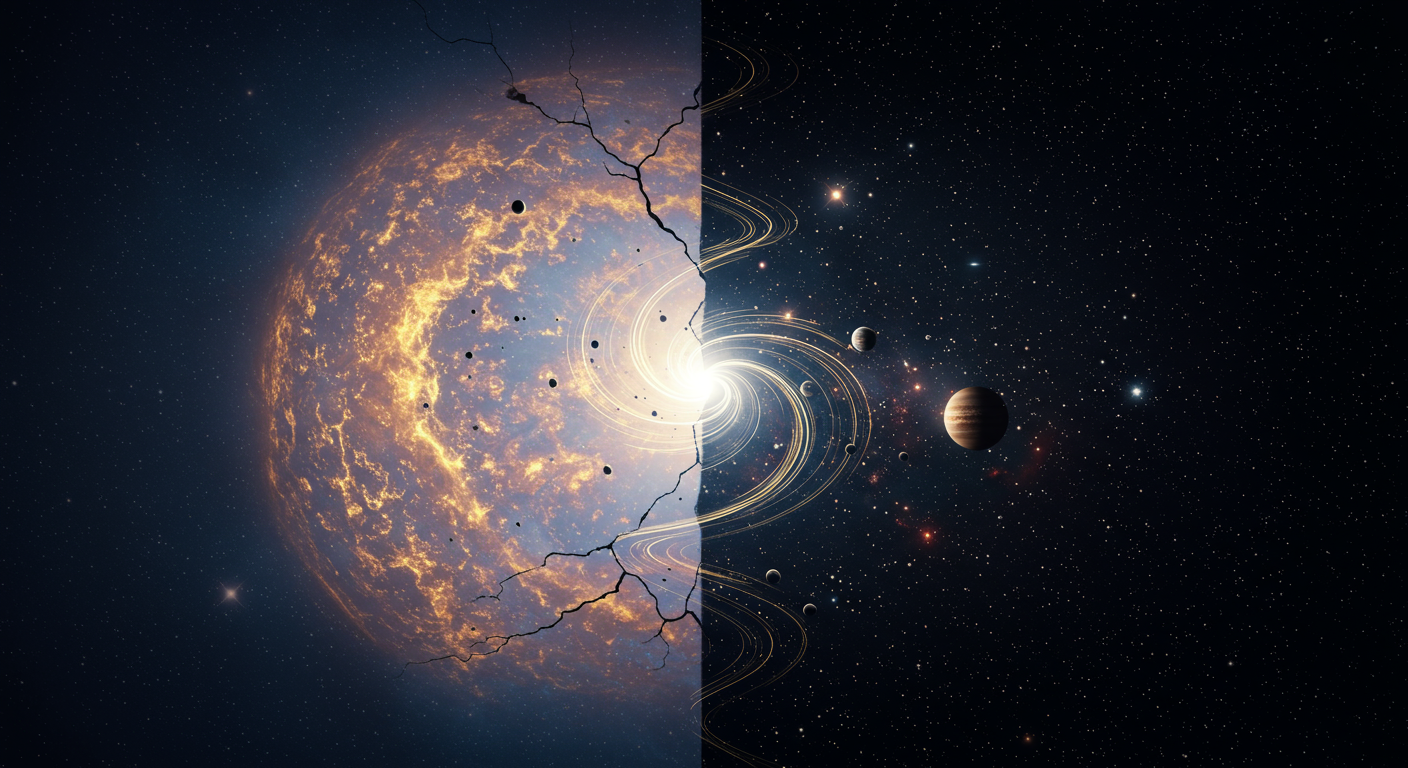Alleviating the Hubble tension with Torsion Condensation (TorC)

In our latest paper, 2507.09228, we investigate a potential resolution to the persistent Hubble tension through a novel framework known as Torsion Condensation (TorC). This work, led by PhD student [Sinah Legner] and in collaboration with Will Handley and Will Barker, delves into an extension of General Relativity (GR) that is fundamentally motivated by the gauge theories that successfully describe the other fundamental forces of nature.
The Cosmological Context: A Universe in Tension
The standard model of cosmology, ΛCDM, has been remarkably successful, but it faces a significant challenge: the Hubble tension. This is a persistent discrepancy between measurements of the Universe’s expansion rate ($H_0$) made from the early Universe, such as those from the Cosmic Microwave Background (CMB) by the Planck satellite (1807.06209), and those from the late Universe, like the SH0ES collaboration’s supernova measurements (2012.08534). This tension motivates the exploration of new physics beyond ΛCDM.
Our paper explores one such avenue: Torsion Condensation (TorC). TorC is a specific model within Poincaré gauge theory, which extends GR by incorporating spacetime torsion—a geometric property that can be visualized as an infinitesimal twisting of the spacetime fabric.
TorC: A Principled Extension to Standard Cosmology
A key feature of the TorC model is that it naturally contains ΛCDM as a special case. It introduces two new parameters beyond the standard six:
- $\varpi_r$: The initial value of a torsion-related scalar field in the early Universe.
- $\Omega_L$: The “bare” dark energy density, which is now an independent parameter rather than being fixed by other energy densities.
When $\varpi_r$ is set to unity, the TorC equations reduce precisely to those of GR, making it a well-defined extension to standard cosmology rather than a complete replacement. This provides a robust framework for testing deviations from ΛCDM that might resolve the Hubble tension.
Methodology and Analysis
To constrain the TorC model, we implemented its cosmological background evolution in a modified version of the CAMB Boltzmann solver. This involved calculating an “effective” dark energy component that captures the influence of the new torsional dynamics. We then employed our group’s advanced Bayesian inference tool, PolyChord (1502.01856), interfaced through Cobaya, to perform a rigorous parameter estimation using data from both the Planck 2018 and SH0ES 2020 datasets.
Results: Easing the Tension
Our analysis reveals that the TorC model can successfully accommodate a higher value of the Hubble constant, bringing the value inferred from CMB data into better agreement with local measurements. We quantified this improvement using the $R$-statistic, a Bayesian tool for assessing dataset consistency (1902.04029), which showed that the tension between Planck and SH0ES is significantly alleviated within the TorC framework.
However, this improved fit comes at a cost. A direct Bayesian model comparison, which penalizes added complexity via Occam’s razor, shows that TorC is not yet decisively favored over the simpler ΛCDM model. The substantial improvement in fitting the joint dataset is balanced by the penalty for introducing two additional free parameters.
Future Directions
This study establishes Torsion Condensation as a compelling, physically motivated theory that can address one of cosmology’s most pressing problems. While not yet a definitive replacement for ΛCDM, its ability to alleviate the Hubble tension warrants further investigation. Future work will focus on developing a full perturbation theory for TorC, enabling more precise predictions for large-scale structure and the CMB, and exploring its potential to resolve other cosmological anomalies.



Content generated by gemini-2.5-pro using this prompt.
Image generated by imagen-3.0-generate-002 using this prompt.